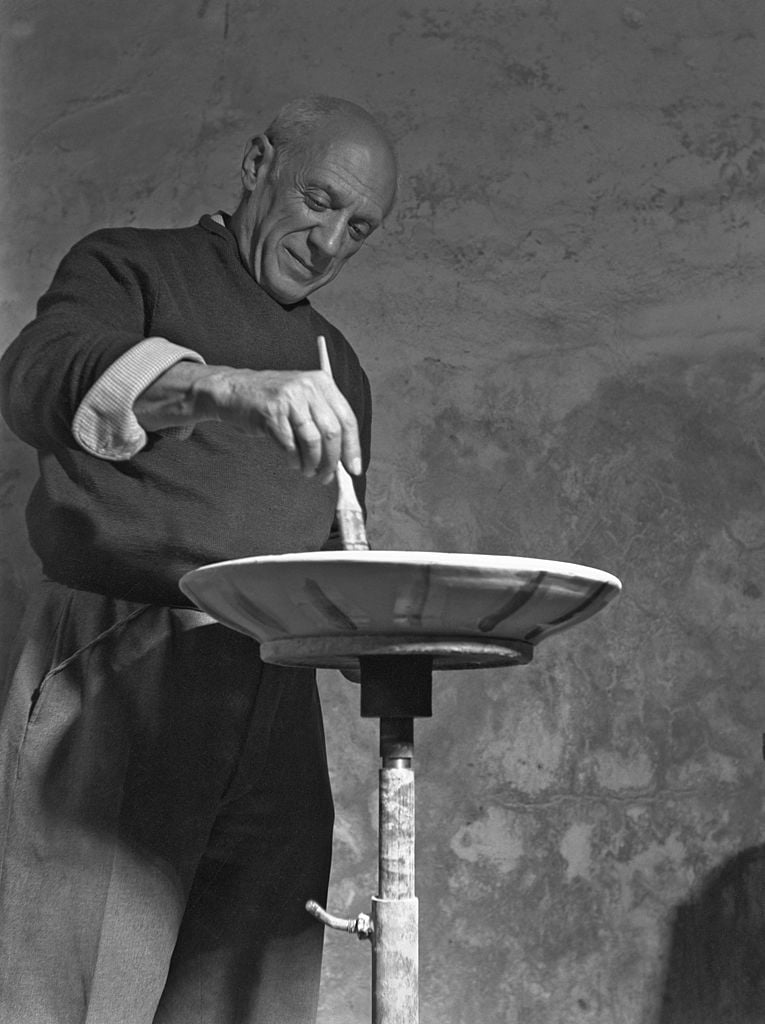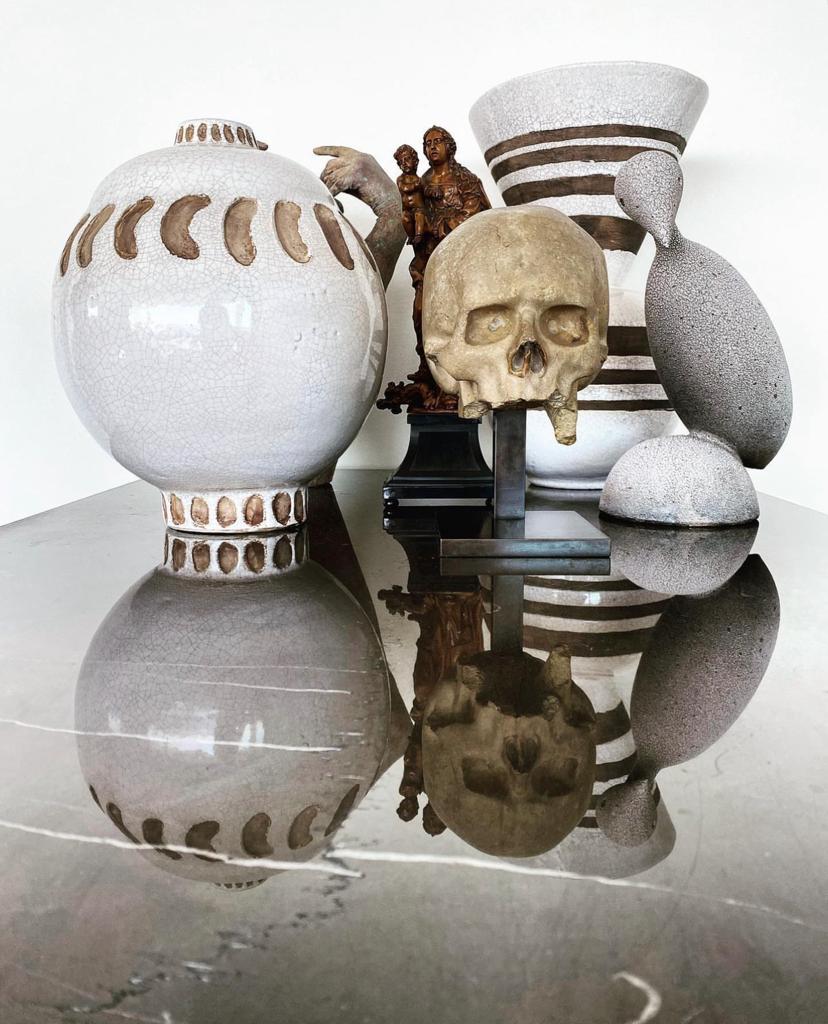Each month in The Hammer, art industry veteran Simon de Pury lifts the curtain on his life as the ultimate art world insider, his brushes with fame and his invaluable insight into the workings internal art market.
We live in a time when artists have an almost unlimited choice of means of expression. New technologies have brought a generation of disruptors with their own sense of aesthetics. Blockchain can create rarity through limited editions or even uniqueness which has opened vast new areas for collectors. This happened much faster than for photography. I remember the general skepticism that presided over Sotheby’s decision to open a department dedicated to photography in the early 1970s, some 150 years after the first photograph ever taken by Joseph Nicéphore Niépce. The word NFT has largely disappeared from mainstream conversation and been replaced by digital sculpture or digital art. It is constantly gaining new practitioners and building a huge following. The enormous popular success of the recent MoMA Exhibition by Refik Anadol attests to it.
Versatility in an artist is fully accepted today. The days when the fabulous drawings of the French writer Victor Hugo were not taken seriously are long gone. How could a dominant figure in the world of literature be at the same time a great visual artist? I also vividly remember conversations I had with highly respected figures in the art world in the early 1980s when I professed my enthusiasm for the work of Gerhard Richter. Surely he couldn’t be a serious artist if he did figurative and abstract paintings at the same time? Fortunately, the approach of accepting that someone is talented in a specific medium or genre has given way to accepting versatile talent. Personalities like Julian Schnabel or Pharrell Williams who can excel in the worlds of art or music as well as film, design or fashion would have had a much harder time being recognized in more than one category time.
When you look at the contemporary art auction catalogs of Christie’s, Sotheby’s and Phillips, you don’t see much of the expansion described above of the media and techniques in which artists can express themselves today. . The vast majority of the works on offer are in timeless techniques of oil on canvas or sculptures in bronze or stone. Installation art, video, photography and digital art are relegated to the fringes for the simple reason that there is too little demand for these works to make them commercially viable.

Spanish artist Pablo Picasso decorates one of his ceramic dishes, Paris, 1948. Photo Archivio Cameraphoto Epoche/Getty Images.
It’s probably no coincidence that ceramics, another timeless technique that has been around forever, is experiencing a renaissance and flourishing precisely in response to all this technology. The many new windows opening up to artists through burgeoning technological advances have at the same time sparked a “back to basics” movement that has entirely revived the artistic practice of working with clay, ceramics, porcelain, glass and textiles. Great contemporary artists such as Thomas Schütte, Rosemarie Trockel, Ai Weiwei, Simone Leigh or Sterling Ruby, and many others, devote part of their practice to the production of ceramic works. Then you have artists such as Takuro Kuwata, Magdalene Odundo, Ritsue Mishima or Edmund de Waal who focus entirely on ceramics, glass or porcelain and have taken these disciplines to new heights. Succeeding in these areas requires, in addition to creativity, innovation and originality, a high degree of know-how and experience. The possibility of having extra-large kilns allows certain artists to carry out ceramic works on a scale hitherto difficult to achieve.
Pablo Picasso is of course the imposing artist of the 20th century who has already brought the world of ceramics to life. In 1946, he met the owners of the Madoura ceramic workshop while visiting the annual pottery exhibition in Vallauris in the south of France. He is passionate about this new medium until he completely dominates it as he does with engraving, lithography or linocut.

Pottery still life by Jean Besnard and Clémentine Keith-Roach, skull by Memento Mori and Virgin and Child, courtesy of Simon de Pury.
George Jouve, Jacques and Dani Ruelland and Jean Besnard are some of my favorite mid-20th century French potters. Twenty years ago, after having a late-night cup with my then girlfriend at La Palette, my favorite café on the Left Bank in Paris, we started strolling rue de Seine. We looked at Vallois’s showcase, the gallery of Bob and Cheska Vallois, who are among the best decorative arts dealers of the 20th century, not only in Paris but in the world. There, lightning struck instantly when I first laid eyes on a pair of vases by Jean Besnard. I couldn’t wait until the next morning to call them to inquire about the price and try to acquire them. They gave me a price that seemed high but told me they were in reserve so they couldn’t sell to me until they knew if the person who put them in reserve was going to buy them.
I heard nothing more from the gallery, and on another late-night walk about three weeks later, I still saw the same vases in the window, and still loved them just as much. The next morning, I called them back to finally get my hands on the vases. I was told they were still in reserve. This time I got a little pissed off and said it was not acceptable to have artwork in storage for such a long time. The same day they called me back to tell me that they had now sold them to the person who had put a reservation. I was extremely disappointed to know very well that you forever regret the objects that escape you.
Barely three months had passed when I received a Sotheby’s auction catalog highlighting objects from the Karl Lagerfeld collection. The genius fashion designer periodically auctioned off parts of his collection. I myself had created the one for his Memphis furniture collection in 1991 at Sotheby’s in Monaco. Flipping through all the pages of artwork carefully chosen by her shining eye, I was amazed to see the two vases by Jean Besnard that I coveted. Sometimes in life chances come twice, so I managed to be on the phone on auction day. The bidding was fierce and the price kept rising. We had long since exceeded Vallois’ asking price but I just couldn’t stop bidding. When the hammer finally fell, I was relieved to finally have “my” vases but in a state of shock after far exceeding what they could reasonably be worth.

Karl Lagerfeld in Monte Carlo in October 1991 for the auction of his Memphis Furniture Collection which I had the privilege of directing. Courtesy of Simon de Pury.
I saw in an interview that Karl Lagerfeld gave to a German media that he was delighted with the result of the sale and the results of Besnard ceramics in particular. I still had a hard time imagining that there was anyone else as crazy as me to keep bidding for so long. My curiosity was killing me, so I called a former colleague and friend at Sotheby’s. He first made me swear that I would never betray his indiscretion, then told me that the underbidder was none other than the girlfriend I originally scouted the vases with late at night in Vallois . At the time of the auction, we were no longer together so I never knew if she really wanted them or if it was an act of revenge to make me pay as much as possible.
This long anecdote testifies to my passion for ceramics. So I relish the current wave of great ceramic art that is being done all over the world. That’s why I’m currently hosting an online primary market auction at de-PURY.com titled FIRE – Contemporary Glass & Ceramics which will take place during the second part of June.
Simon de Pury is the former President and Chief Auctioneer of Phillips de Pury & Company, former European President and Chief Auctioneer of Sotheby’s and former Curator of the Thyssen-Bornemisza Collection. Today he is an auctioneer, curator, private dealer, artistic advisor, photographer and DJ. Instagram: @simondepury
Follow Artnet News on Facebook:
Want to stay one step ahead of the art world? Subscribe to our newsletter to receive breaking news, revealing interviews and incisive reviews that move the conversation forward.
